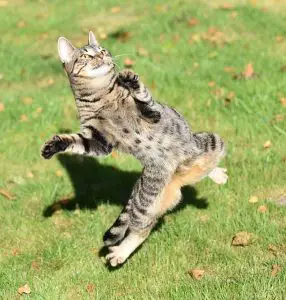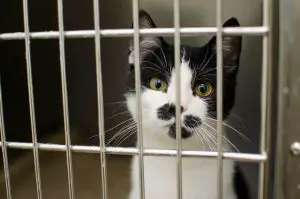
As seasoned experts in feline behavior, we know that cat scratching is a natural and essential part of a cat’s life. Not only does it help them keep their claws sharp, but it also provides a means for exercise, stress relief, and territorial marking. In this comprehensive guide, we will delve deep into Understanding and Managing Feline Scratching Behavior to ensure a happy balance between your cat’s needs and your desire to keep your home in top condition.
Why Do Cats Scratch?
Before delving into the management strategies, it’s critical to understand why cats scratch. Scratching is a multifunctional behavior that serves several purposes for a cat:
-
- Maintenance of claw health by shedding the outer nail layers.
-
- Stretching and exercising their body, particularly the muscles of their paws, legs, shoulders, and spine.
-
- Communication through scent and visual marks.
-
- Stress relief and self-soothing behavior.
Providing Appropriate Scratch Surfaces
One of the most effective ways to manage scratching behavior is by providing acceptable scratching surfaces. Cats have different preferences when it comes to scratching materials and angles:
-
- Offer a variety of scratching posts and pads with different textures like carpet, sisal, or cardboard, and at various angles to match your cat’s preferences.
-
- Place scratching posts in strategic areas where your cat naturally spends a lot of time, such as near their resting place or along their common walking paths.
-
- Ensure scratching posts are stable and tall enough for your cat to stretch fully while using them.
Training Your Cat to Use Designated Scratching Areas
Simply having scratching posts available is not always enough. Training your cat to use them is the key:
-
- Encourage the use of scratching posts by sprinkling catnip on them or using feline pheromone sprays.
-
- Use positive reinforcement: praise your cat and offer treats when they use the post.
-
- Never punish your cat for scratching, as it can lead to anxiety and more unwanted behavior.
Deterring Unwanted Scratching
While encouraging the right scratching behavior, it’s also important to deter them from unwanted areas:
-
- Use double-sided sticky tape, aluminum foil, or commercial scratch deterrents on furniture you want to protect.
-
- Place scratching posts near the off-limits items to redirect their attention.
-
- Cover the areas with items that prevent your cat from scratching, such as a sheet or blanket, until they have been trained to use their scratching post.
Regular Claw Maintenance
Maintaining your cat’s claws can help minimize damage to your furniture:
-
- Regularly trim your cat’s nails to keep them blunt and less destructive.
-
- Make nail trimming a positive experience with treats and gentle handling.
-
- For those uncomfortable with nail trimming, consider asking a professional groomer or your veterinarian for help.
Environmental Enrichment for Managing Meline Scratching Behavior
Scratching can sometimes be a response to boredom or lack of stimulation. Keeping your cat stimulated is key:
-
- Provide interactive toys that keep your cat engaged. Here is our post on the type of toys you can make at home.
-
- Consider setting up a cat tree or shelves to increase vertical space and provide more exploration opportunities.
-
- Establish a daily playtime routine to reduce your cat’s stress and distract them from scratching furniture.
Understanding Your Cat’s Preferences
Each cat is unique, and what works for one may not work for another. Pay attention to your cat’s patterns and preferences to tailor the environment to their needs:
-
- Notice if your cat prefers horizontal or vertical surfaces and provide scratching options to match.
-
- Observe the materials that attract your cat most, whether it’s wood, carpet, or sisal, and offer more of those.
-
- Be patient and willing to experiment with different scratching posts and locations until you find what your cat loves.
Monitoring and Adjusting Strategies for Managing Feline Scratching Behavior
Maintaining a scratch-friendly environment is an ongoing process. Be prepared to adjust your strategies as your cat grows and changes:
-
- As your cat ages or as new cats come into your home, you may need to introduce more scratching surfaces.
-
- Keep an eye on the condition of scratching posts and replace them when they are worn out to maintain their attractiveness.
-
- If your cat loses interest in their scratching post, refresh it with catnip or relocate it to rekindle their interest.
Conclusion for Managing Feline Scratching Behavior
Understanding and managing feline scratching behavior can be challenging, but by providing appropriate outlets for this natural behavior, you can keep both your cat and your home happy. Remember, patience, consistency, and observation are your best tools in creating a positive environment for your feline companion. Engage with their natural behaviors, and they’ll show you their appreciation in countless ways most notably, by keeping their claws to the posts and away from your furniture. Here is another great article about feline scratching.







